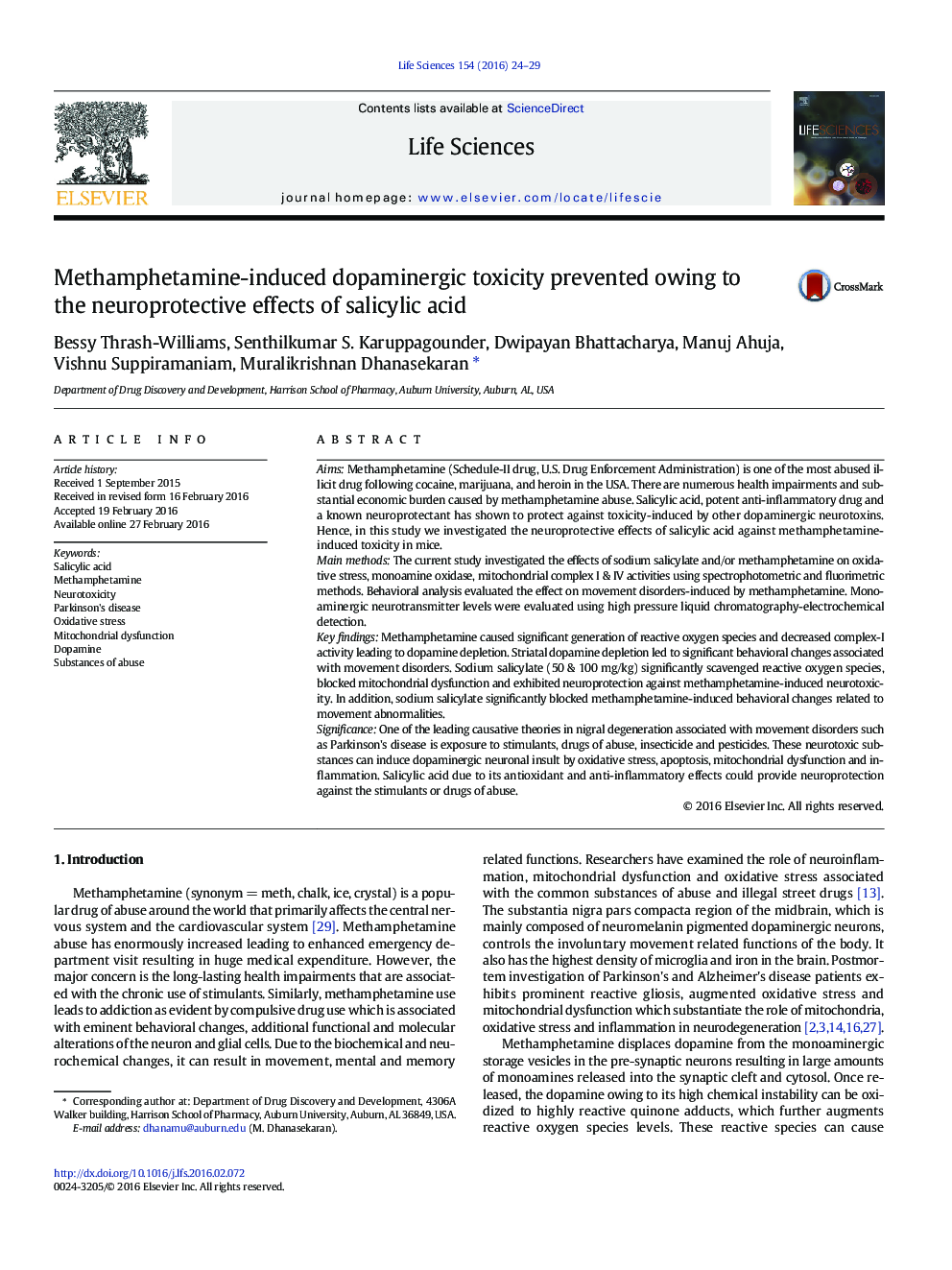| Article ID | Journal | Published Year | Pages | File Type |
|---|---|---|---|---|
| 5841451 | Life Sciences | 2016 | 6 Pages |
AimsMethamphetamine (Schedule-II drug, U.S. Drug Enforcement Administration) is one of the most abused illicit drug following cocaine, marijuana, and heroin in the USA. There are numerous health impairments and substantial economic burden caused by methamphetamine abuse. Salicylic acid, potent anti-inflammatory drug and a known neuroprotectant has shown to protect against toxicity-induced by other dopaminergic neurotoxins. Hence, in this study we investigated the neuroprotective effects of salicylic acid against methamphetamine-induced toxicity in mice.Main methodsThe current study investigated the effects of sodium salicylate and/or methamphetamine on oxidative stress, monoamine oxidase, mitochondrial complex I & IV activities using spectrophotometric and fluorimetric methods. Behavioral analysis evaluated the effect on movement disorders-induced by methamphetamine. Monoaminergic neurotransmitter levels were evaluated using high pressure liquid chromatography-electrochemical detection.Key findingsMethamphetamine caused significant generation of reactive oxygen species and decreased complex-I activity leading to dopamine depletion. Striatal dopamine depletion led to significant behavioral changes associated with movement disorders. Sodium salicylate (50 & 100Â mg/kg) significantly scavenged reactive oxygen species, blocked mitochondrial dysfunction and exhibited neuroprotection against methamphetamine-induced neurotoxicity. In addition, sodium salicylate significantly blocked methamphetamine-induced behavioral changes related to movement abnormalities.SignificanceOne of the leading causative theories in nigral degeneration associated with movement disorders such as Parkinson's disease is exposure to stimulants, drugs of abuse, insecticide and pesticides. These neurotoxic substances can induce dopaminergic neuronal insult by oxidative stress, apoptosis, mitochondrial dysfunction and inflammation. Salicylic acid due to its antioxidant and anti-inflammatory effects could provide neuroprotection against the stimulants or drugs of abuse.
